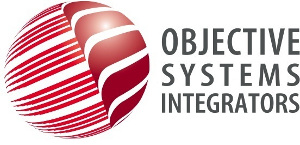Related Research Articles
Customer relationship management (CRM) is a process in which a business or other organization administers its interactions with customers, typically using data analysis to study large amounts of information.
Personalized marketing, also known as one-to-one marketing or individual marketing, is a marketing strategy by which companies leverage data analysis and digital technology to deliver individualized messages and product offerings to current or prospective customers. Advancements in data collection methods, analytics, digital electronics, and digital economics, have enabled marketers to deploy more effective real-time and prolonged customer experience personalization tactics.

Amdocs is a multinational corporation that was founded in Israel and currently headquartered in Chesterfield, Missouri, with support and development centers located worldwide. The company specializes in software and services for communications, media and financial services providers and digital enterprises.
The eCRM or electronic customer relationship management coined by Oscar Gomes encompasses all standard CRM functions with the use of the net environment i.e., intranet, extranet and internet. Electronic CRM concerns all forms of managing relationships with customers through the use of information technology (IT).
KANA Software, Inc. is a wholly owned subsidiary of Verint Systems and provides on-premises and cloud computing hosted customer relationship management software products to many of the Fortune 500, mid-market businesses and government agencies.

Microsoft Customer Care Framework (CCF) was a desktop-based framework which was used to address issues faced by service providers caused by multiple line of business (LOB) systems while interacting with their customers. It was discontinued though many of its core functions were moved to an add-in for the Microsoft Dynamics CRM product named the Unified Service Desk.
Business support systems (BSS) are the components that a telecommunications service provider uses to run its business operations towards customers.

Really Simple Systems CRM is a Cloud CRM provider, offering CRM systems to small and medium sized companies.
Cramer Systems is a British telecommunications firm, founded in 1996 by Jon Craton, Mark Farmer and Don Gibson. The firm developed Operations support systems (OSSs) for the telecommunication industry clients such as Vodafone, KPN Telecom, and British Telecom. In August 2006 Amdocs announced the completion of the acquisition of the company. The products developed by Cramer have now been integrated into the Amdocs product suite. The company name is a combination of three letters from the names of Craton and Farmer.

Objective Systems Integrators (OSI) is a multinational computer technology corporation that develops, manufactures, licenses, and supports software products which automate the monitoring, control, delivery, and management of services for multinational corporation service providers including:
Netcracker Technology Corp., a wholly owned subsidiary of NEC Corporation, is a provider of business support system (BSS), operations support systems (OSS) and software-defined networking (SDN) and network functions virtualization (NFV) solutions. The company also offers professional services, as well as managed services.
Tata Business Support Services Ltd is a wholly owned subsidiary of Tata Sons, providing outsourced contact center services to large telecommunications operators, Internet service providers, DTH service providers, and online travel agencies amongst other domestic (Indian) and international clients. Tata BSS is among the third-party outsourced customer service providers in India, serving domestic as well as international customers. With facilities across 21 "global delivery centers" that accommodate more than 23,000 employees.
In computing, Application Integration Architecture (AIA) is an integration framework produced by Oracle Corporation.
Operations support systems (OSS), operational support systems in British usage, or Operation System (OpS) in NTT, are computer systems used by telecommunications service providers to manage their networks. They support management functions such as network inventory, service provisioning, network configuration and fault management.
Aurec Group, is an Israeli holding company that includes cable and telecom investments. It was established in 1968 by Morris Kahn.
Telecommunications billing is the group of processes of communications service providers that are responsible to collect consumption data, calculate charging and billing information, produce bills to customers, process their payments and manage debt collection.
Proposal software also known as proposal management software, proposal writing software, or proposal automation software is a computer program designed to help users develop proposals, presentations, and responses to RFPs. Proposal management software is becoming increasingly popular in companies that manage frequent and extensive proposal writing projects. Such software allows businesses to automate more routine tasks while easily tracking multiple versions.
OSS/BSS, in telecommunications, refer to operations support system and business support system. The distinction emphasizes a separation of concerns between maintaining network operations and the business around which that network is built. Communications service providers support a broad range of services and functions with their OSS/BSS. BSS primarily consists of order capture, Customer Relationship Management and Telecommunications billing whereas OSS covers Order Management, Network Inventory Management and Network Operations.
Xura, Inc. , previously known as Comverse, Inc., was a technology company headquartered in Wakefield, Massachusetts, United States, in existence from 2013 to 2017, that offered a portfolio of digital services which enabled global communications across a variety of mobile devices and platforms. Xura marketed and sold to communications service providers (CSPs) and to enterprises.
Creatio is a Software as a service (SaaS) low-code solution for process management and CRM. As of 2020, the Creatio solution stack consisted of Studio Creatio, Sales Creatio, Marketing Creatio and Service Creatio.
References
- ↑ Martha Rogers; Don Peppers (21 June 2005). Return on Customer: Creating Maximum Value From Your Scarcest Resource. Random House Digital, Inc. ISBN 978-0-385-51030-1 . Retrieved 13 October 2012.
- ↑ Musico, Christopher (January 16, 2008). "Amdocs Tries to Digitally Connect with Communications Providers". CRM Magazine. Archived from the original on January 21, 2013. Retrieved 2008-05-22.
- ↑ "Companies Earn "Bad Profits" from One-third of Customers, new Bain & Company Research Finds". Bain & Company. January 19, 2006. Archived from the original on June 7, 2007. Retrieved 2008-05-22.
- ↑ Rae, Jeneanne (November 27, 2006). "The Importance of Great Customer Experiences". Business Week. Retrieved 2008-05-22.
- ↑ Lopez, Maribel D. (November 12, 2007). "Operators Thrive by Building and enabling Experiences". Forrester. Archived from the original on May 27, 2008. Retrieved 2008-05-22.